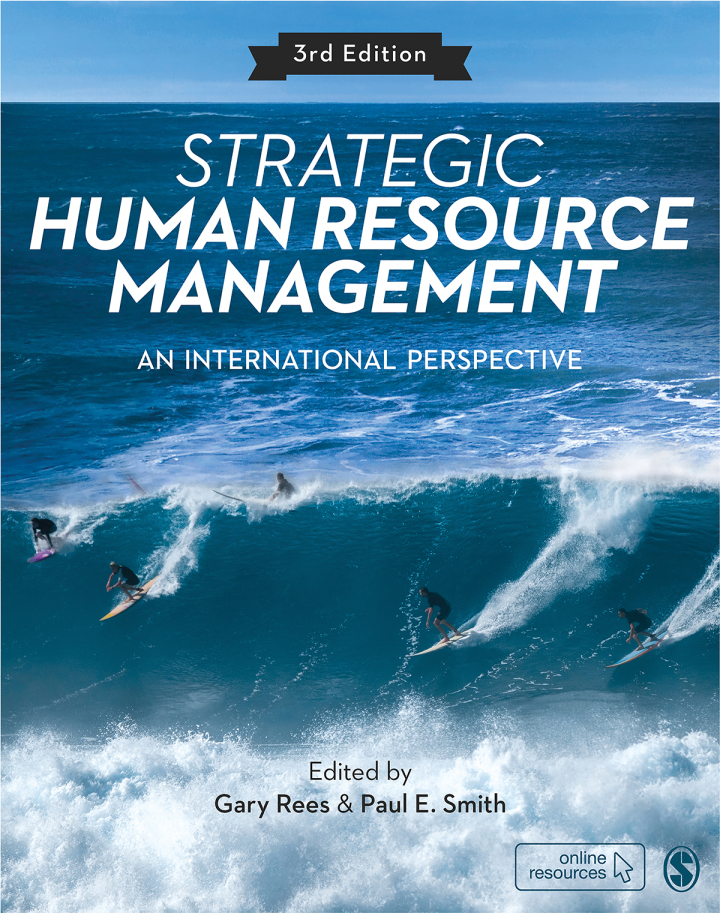
Strategic Human Resource Management 3rd Edition An International Perspective
PUBLISHER: Sage
Trường ĐH, Nhóm, Thư Viện: Gọi 0915920514 để báo giá eBook hosting trên Vital Source hoặc mua Sách In
Quản lý nguồn nhân lực chiến lượcMột góc nhìn quốc tếCho dù bạn đang học ở cấp đại học hay sau đại học, đội ngũ tác giả chuyên gia xuất sắc của chúng tôi sẽ hướng dẫn bạn các chủ đề chính về quản lý nguồn nhân lực từ quan điểm chiến lược và quốc tế. Bắt đầu với các nguyên tắc cơ bản của từng chủ đề và tiến tới đánh giá quan trọng, ấn bản thứ 3 bao gồm: Thậm chí nhiều nghiên cứu trường hợp quốc tế hơn từ khắp Châu Âu, Châu Á, Úc và Trung Đông - mang lý thuyết và nền tảng học thuật vào cuộc sống Một loạt các phản ánh Các hoạt động khuyến khích bạn xem xét ý nghĩa thực tế của những gì bạn đã học Một trang web đồng hành được cập nhật có nhiều tài nguyên dành cho giảng viên và sinh viên, bao gồm Cẩm nang dành cho giảng viên, các slide PowerPoint, Testbank, các bài báo tạp chí được đề xuất và các trường hợp kinh doanh bổ sung
About the ContributorsPrefaceOnline ResourcesPart 1 The Organization, the Organizational Context and Strategy1 An Introduction to the Organization, its Environment and Human Resource ManagementChapter overviewLearning objectivesIntroductionThe concept of organizationWhat is HR?The strategy, structure and culture debateThe environmentLinking HR to organizational strategyGlobalization and internationalizationConclusionFurther reading2 Human Resource Management through a Strategic PerspectiveChapter overviewLearning objectivesIntroduction: Strategy in the twenty-first centuryCorporate strategy and business-level strategyThe core areas of corporate strategyThe importance of HRM in strategyFocus on strategic human resource managementEmergent corporate strategyEmergent business strategyConclusionFurther reading3 Concepts, Practices and Trends in SHRMChapter overviewLearning objectivesIntroductionThe rise of strategic HRMHR strategy in practiceConclusionFurther reading4 The Added Value DebateChapter overviewLearning objectivesIntroductionHRM and its contributionThe evolving nature of the HR functionUlrich's contribution to the development of the HR functionDeveloping a strategic approach to HRMMeasurement within HRThe effective HR functionConclusionFurther readingPart 2 The Functional Aspects of HR5 Recruitment and SelectionChapter overviewLearning objectivesIntroduction‘Good practice’ in recruitment and selectionCompetency frameworksInternal and informal recruitmentEmployer brandingHeadhunters and social mediaShortlistingSelection interviewsAbility testingPersonality testingAssessment centresRecruitment and selection strategyConclusionFurther reading6 Flexible WorkingChapter overviewLearning objectivesIntroductionFlexibility from a HRM perspectiveThe flexible firm: The employers’ perspectiveFlexibility from the employees’ perspectiveKey forms of flexible workingConstraints on implementing flexible workingConclusionFurther reading7 Reward Strategy and Managing PerformanceChapter overviewLearning objectivesIntroductionDefinitions of strategic rewardThe change from traditional to strategic payKey underpinning reward theoryThe major determinants of rewardPerformance managementThe major elements in rewardTotal rewardCan reward be strategic?ConclusionFurther reading8 Managing the Employment RelationshipChapter overviewLearning objectivesIntroductionThe meaning of the employment relationshipThe employment relationship from different organizational perspectivesThe role and scope of the stateIdeological perspectives: Neo-liberalism and neo-corporatismEmployers and employers’ associationsPower relationsEmployee voiceEmployee involvement, engagement and participationThe mediaConclusionFurther reading9 Equality and Diversity in the WorkplaceChapter overviewLearning objectivesIntroductionDefinitions of equality, diversity and discriminationThe concept and implications of stereotypingImpact of workplace discrimination for different groupsLegislative response to workplace discriminationOrganizational and strategic HRM roles in addressing equality and diversity in the workplaceEquality and diversity outlookImplications for organizational leadership and strategic human resource managementConclusionFurther reading10 Developing Employees and ManagersChapter overviewLearning objectivesIntroductionTalent, talent development and HRDDeveloping employeesDeveloping managersConclusionFurther readingPart 3 SHRM and the ‘Bigger Picture'11 Organizational CultureChapter overviewLearning objectivesIntroductionOrganizational and corporate cultureSymbolist approaches to organizational cultureThe origins, determinants and effects of organizational culturesLinks between culture and performanceModerators and mediators of the culture–performance linkCulture at a national levelTransferring HRM practices across cultural and organizational boundariesRole of organizational and national culture in international mergers and acquisitionsDifferent approaches to IM&AsConclusionFurther reading12 Managing in a Global ContextChapter overviewLearning objectivesIntroductionThe field and context of international HRMModels of IHRMStrategic life-cycle modelsIntegrative modelsFactors determining cross-national HRM practicesUnderstanding the IHRM policies of the international enterpriseComparative HRMComposing a global workforceIssues and problems in international assignmentsAlternative forms of international workingExpatriate preparation: Recruitment, selection, training and developmentDeveloping intercultural competenceRepatriation trainingReward management and compensationGlobal standardization and convergence in IHRM?IsomorphismConclusionFurther reading13 The Future of HRChapter overviewLearning objectivesIntroductionThe changing contextDemographic changeTechnological advancesWhat kind of ‘deliverables’ are fit for the future?ConclusionFurther readingReferencesIndex















